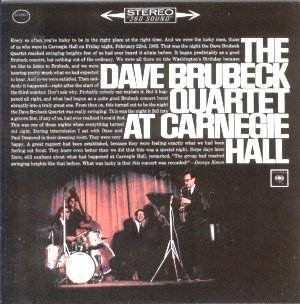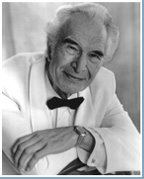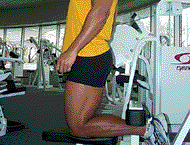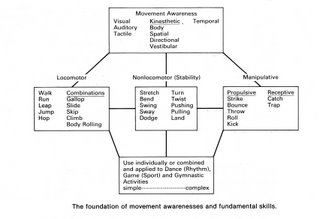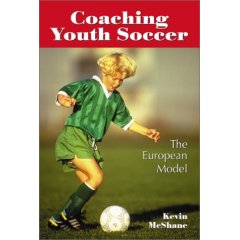
Many of you outside of track & field may not have heard of Kevin McGill. He is a great friend and confidant who is perhaps the world’s foremost authority on the throws. He is co-author of the Throws Manual published by Track and Field News. Kevin defines passion. When he was still in high school, living in New York, he took the train to the Library of Congress in Washington, D.C. and checked a copy of a Norwegian javelin manual (in Norwegian) and then proceeded to translate it with a Norwegian/English dictionary so he could learn more about the javelin. In the 1980 he self publish as a labor of love a periodical called Hammer Notes (Devoted to the Hammer throw). If you can get a hold of any of those, they are classics. Kevin is a special person. I think you will enjoy this interview.
What are most essential requirements for a successful conditioning program?
The coach first needs to know the training history of the athlete, and if possible the detailed records. Second, the coach needs to perform specific tests to measure the athlete generally and specifically. Third, there needs to be some analysis of the movements involved by the coach. Finally, the coach needs to master periodization, so the training plan can be completed. The history, test results, analysis...all need to be implemented into the plan.
What are the most common mistakes in conditioning?
I would say that for preparation for a big meet, there is panic, and a resort to heavy loading. Instead of more rest and recuperation, the athlete gets pounded and cannot recover. "Less is more" -- is ignored.
What is “functional training” from your point of view?
Functional training could be perhaps summarized: literally anything done without a machine. A machine isolates the movement...so anything off the machine could be part of functional training.
What do you do to make your training more functional?
For 40+years, I have checked what other countries did in preparation for track and field. I found in some ways, that the Finns borrowed the US physical education ideas from the late 19th Century and early 20th...and improved the approach. While there may have been 25 medicine ball "drills" in 1910, just guessing...the Finns might have 500 for the javelin alone. If you see the basic approach, then you can do the same thing, and instead of following a set routine...you invent like a Finnish coach. There are also hundreds of exercises using the old wooden wall bars, rarely seen in modern gyms. Bring them back!
How important is specificity?
It is highly overrated. It assumes the body can only be trained in a mimic of the actual event technique. If this were true, why not just toss around a weighted javelin all day...since it would be specific. But..coaches learned about the core, and it goes back to Tennessee Ernie Ford song:
"With the leg bone connected
to the knee bone,
and the knee bone connected
to the thigh bone,
and the thigh bone connected
to the hip bone.
Oh mercy how they scare!"
The great coaches sing this song each day, but it is called pattern recognition. They see what the pattern is in the movement, and can then devise a way to improve the movement parameters. Maybe it is getting stronger; maybe more flexible...that is coaching.
What aspect of conditioning athletes is most difficult and how have you tried to address it?
----It is to control the nutrition and other aspects, outside of the workout. It takes a lot of motivation to convince the athlete: "Don't have 5 beers after you leave here." I spent time talking about goals, and then sticking in there the idea that control of these other aspects enables the training plan to succeed.
With the plethora of information available how can a coach determine what is best?
----It is by travel. Go to other coaches, meet with them, discuss things. Find a mentor and bounce ideas off them. Try something and fail. Then admit you failed, not the athlete. Write down a plan, study all the time, and revise. Be flexible but learn enough so you don't change the whole plan when the temperature drops 1 degree.
Where do you stand on nature versus nurture? How much difference can training make?
------If you want to run 9.80, and you have only run 11.60 in your junior year of high school, then I would say Mother Nature did not give you the fast twitch needed. BUT...you might get to 11.10 in college?? Or you figure you can train for the 400. For things requiring blinding speed, then it is more nature than nurture. For most everything else, it is the other way around. Or course..this is a highly charged question, and can be debated until the end of time.
What is the sure sign that a self proclaimed conditioning guru is not a good source of advice?
-----I think the biggest tip off is: secrecy. One of the top athletes posted on the Internet after the recent WC, and said he would keep some of the training tips (from a "guru") secret. Many "gurus" think that their variation is the only way. The best conditioning people can give explicit advice, and be helpful...because they are above this paranoia which exists with the gurus. NO ONE has 100% of the pie, and the way to success is to have a give and take with other coaches. This way, even the expert can learn a thing or two. Once you have someone who says: I HAVE THE ANSWER...run, don't walk, in the opposite direction.
What do you differently with the female athlete in terms of conditioning?
----I was lucky at Columbia to have some women who showed me that not much had to be changed. They wanted to train like throwers, not women throwers. In this day and age, perhaps you protect the knees a bit more with younger athletes. If the women have been playing soccer, basketball...and are in good shape, it is the knee where you just show more concern.
What has been the biggest innovation in training that you have seen during the course of your career and where is the biggest room for innovation in training athletes?
I think it was the adoption of the rubberized medicine ball. In fact, I did help a major catalog company get on the bandwagon first. Prior to that, I used duct taped Everlast leather balls, and split enough to fill a local beach with the sand.
What's the biggest issue in training athletes today?
Facilities for the post-collegiate athlete could be endangered if more and more schools bar athletes from using them. The US needs to put training centers in all through the US, where our top athletes can get assistance. Also, athletes need better funding to continue in the sport, so they don't have to resort to calendars and car washes to support themselves.
Who has been a role model in your career and why?
Anatoly Bondarchuk has been my role model since I met him in 1982. He was completely open in discussions about technique and training. There was humility and sincerity that I did not experience with some top American coaches. Meeting him convinced me to get involved in Coaching Education after that.
What are the biggest professional challenges have you had to face?
It was in dealing with an NCAA athletic director who did not see eye-to-eye on the composition of a track and field program. In fact...it led me to change careers.
What do you enjoy most about coaching? Dislike?
I don't coach day-to-day right now, but do enjoy helping coaches with information. I hand out CD's with information, or make tapes of important.
Did there come a time in your career where you were faced with a "fork in the road?" If so, do you ever revisit the decision you made or didn't make?
---When I decided in 1993 to get out of full time coaching, and go into selling timing equipment, I would say that was the big fork. It turned out to be the right decision, but it was awfully hard walking that last day.
What inspired you to get into coaching?
I always enjoyed biomechanics and technique. I started helping guys on my own team, and that led to my first coaching job in Bakersfield, CA in 1968. As soon as one kid got a PR, I was hooked. He was a pole vaulter, from Mexico, and I was invited to their house. I ate Mexican food for the first time. I associate that first improvement with eating that food! Was it the food or the PR that convinced me to stay??
Is failure ever valuable?
It is more of an education that success. Some successful coaches have never had to eat humble pie. It is then, as you put your fork into humble pie, that you decide: either learn this sport, or get the hell out.
Which changes now taking place in your field that should be encouraged, and which resisted?
In the coaching of track and field, there is less help from the USOC in biomechanics now, than 20 years ago. I would like to know why is that. Finland has a wonderful biomechanics situation for their people. The US needs to look at the current sorry state of affairs in the technical events, and do something. There are too many parading around, doing cheap clinics, with the idea...they have the message. Baloney. Coaches...be selective. Don't buy the fluff. Dig for the real information. Learn to actually create a plan that your peers would be jealous of.





